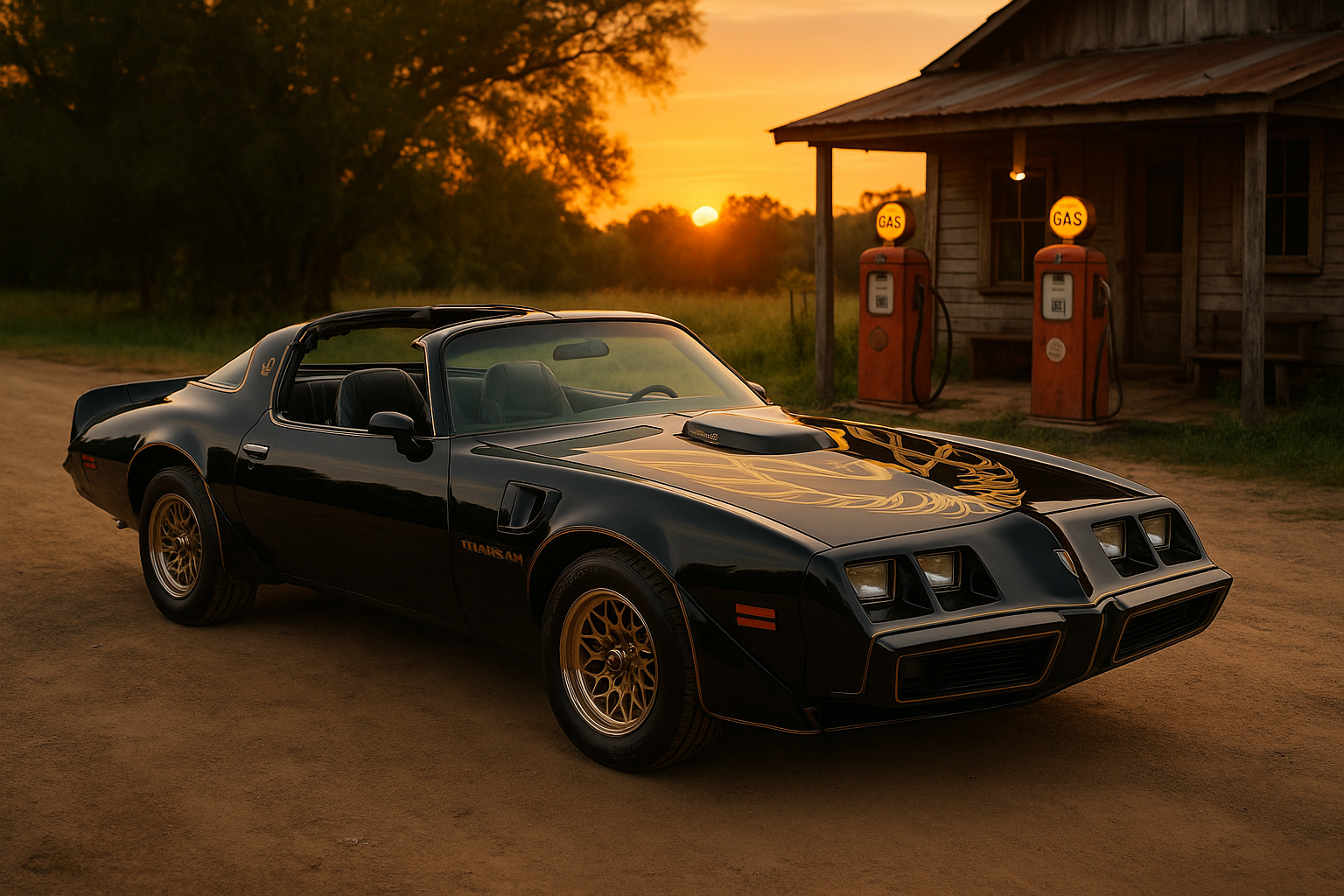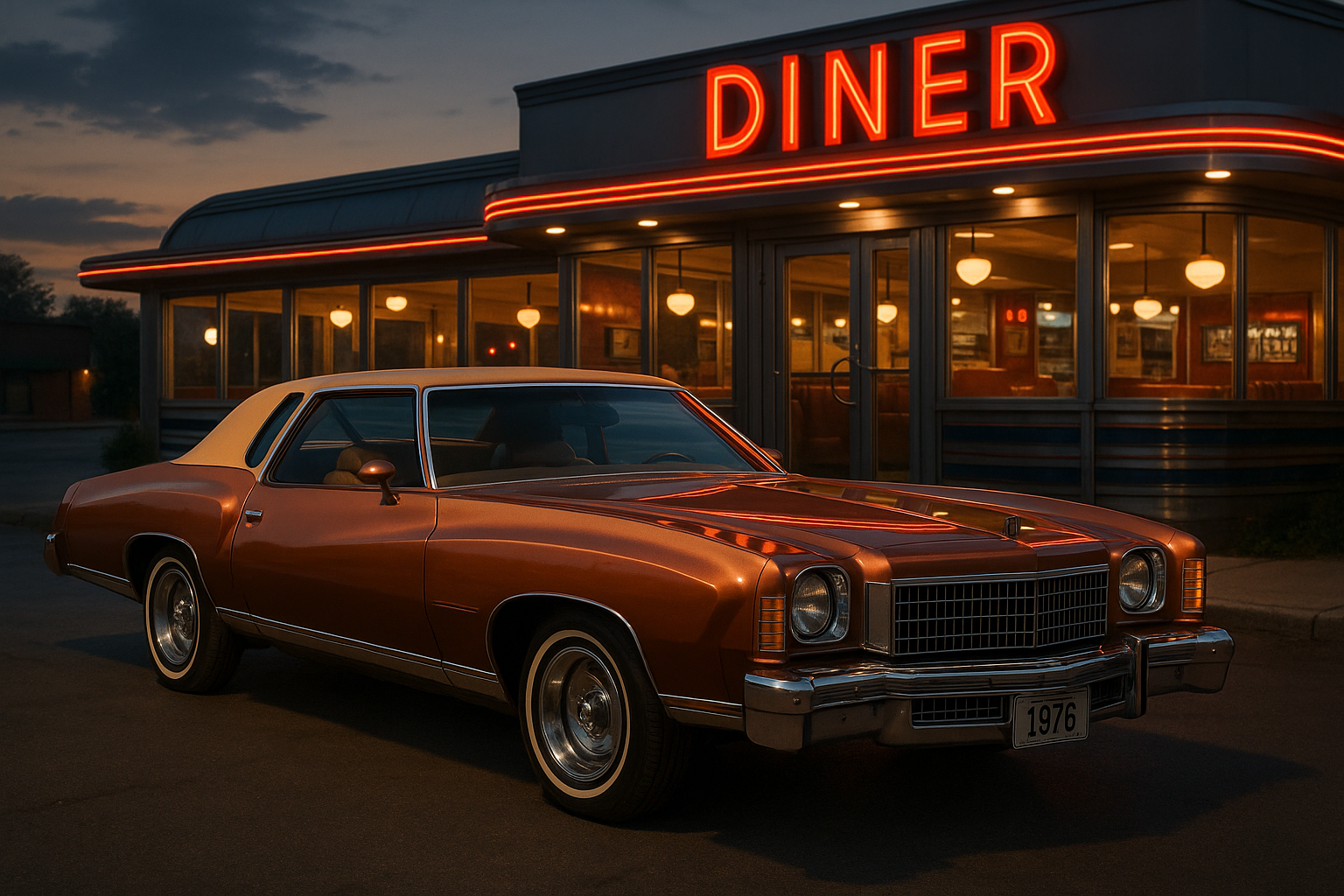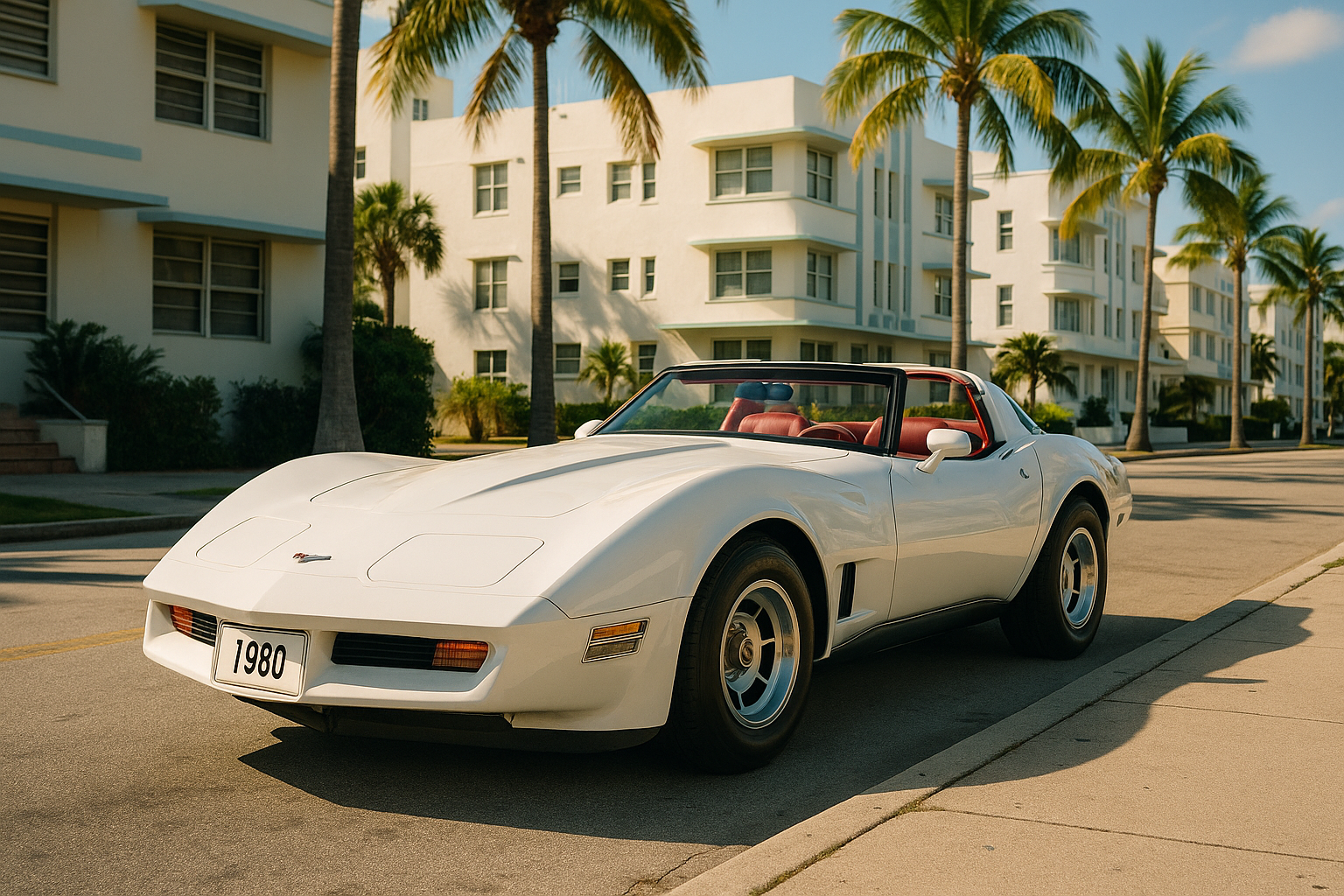The American muscle car. It’s more than just a vehicle; it’s a cultural icon. The rumble of a big-block V8, the smell of unburnt fuel, the raw, unfiltered connection between driver, machine, and asphalt—it’s a dream that has captivated enthusiasts for generations. For many, that dream car is a 1969 Camaro, a 1970 Chevelle SS, or a Hemi-powered Mopar.
Then, reality hits. You check the prices on these top-tier classics and realize you might need to sell your house and a kidney to afford a decent example. The six-figure price tags of the most famous muscle cars have made the dream feel unattainable for the average American car lover.
But what if we told you the dream is still alive? What if you could get that V8 rumble, that head-turning style, and that authentic muscle car experience for less than the price of a new Honda Civic? You just have to know where to look. The golden era of the late ’60s produced the most famous models, but the ’70s and ’80s created some incredible, and often overlooked, legends of their own. These are the cars that are now hitting the sweet spot of affordability and classic appeal. Forget the blue-chip investments; these are the muscle cars you can buy, drive, and enjoy without needing a second mortgage.
1. The “Bandit” Era: 1979-1981 Pontiac Trans Am
Thanks to Burt Reynolds and the film Smokey and the Bandit, the late ’70s Pontiac Trans Am is arguably one of the most recognizable cars on the planet. With its massive Screaming Chicken hood decal, shaker hood scoop, and T-top roof, it was the definition of automotive swagger.
Why It’s Cool: This car is pure, unapologetic attitude. While the horsepower wars of the ’60s were a distant memory, the Trans Am still had the look. It was the last of the old-school muscle cars, a final, flamboyant middle finger to the Malaise Era of emissions regulations and fuel economy concerns.
Why It’s Affordable: Power. Or rather, the lack of it compared to its predecessors. While early second-gen Trans Ams had potent 400 and 455 cubic-inch engines, the later models were choked by emissions equipment. The base engine was a 301ci V8, and the “big” engine was a 301 Turbo—an interesting but not particularly powerful setup. Because they aren’t ‘H.O.’ or ‘SD-455’ models, these late ’70s/early ’80s cars are dramatically cheaper.
What You Get: You’re buying the look and the experience. For around $15,000 to $25,000, you can find a solid, driver-quality T-top car. You get the iconic styling, the V8 rumble (even if it’s a bit subdued), and a car that gets more thumbs-ups than almost anything else on the road. The handling, thanks to the WS6 package available on many, was actually quite good for its time.
What to Look For: Rust is the main enemy, especially in the floors, trunk, and around the T-tops. The 301 Turbo engines can be finicky, so many owners have swapped them for more reliable and powerful Pontiac 400s or Chevy 350s.

2. The Forgotten Fox: 1979-1986 Ford Mustang GT
The Fox-body Mustang is a legend in its own right, credited with saving the Mustang name and reigniting performance at Ford. For years, these were just cheap, used cars. Now, clean, unmolested examples of the later 5.0 GTs are skyrocketing in value. But the early cars? They’re still a bargain.
Why It’s Cool: The Fox-body was a return to form. It was light, simple, and had a V8. The 1982 Mustang GT, with its “The Boss is Back!” advertising campaign, brought back a high-output version of the 5.0-liter V8 (technically a 4.9L, but who’s counting?). It was a huge moment, signaling that American performance was waking from its slumber.
Why It’s Affordable: The early four-eyed cars (1979-1986) are less popular than the later “aero” nose models (1987-1993). Furthermore, many of these cars were modified, raced, and abused, making clean, original examples rare but not yet exorbitantly expensive. The earliest models (1979-1981) had even less power, making them the most affordable entry point.
What You Get: The best bang-for-your-buck in the entire classic car world. For $10,000 to $20,000, you can get into a very nice 1983-1986 GT with the 4-barrel carburetor or early fuel injection. These cars are incredibly simple to work on, the aftermarket support is virtually infinite, and they are an absolute blast to drive. That lightweight chassis combined with the torque of the 5.0 V8 is a recipe for fun.
What to Look For: Check for a solid, rust-free chassis, especially the “battle boxes” where the rear suspension mounts. Many have been poorly modified, so finding one that’s mostly stock is a huge plus. The T-top models are prone to leaks.

3. The Personal Luxury Bruiser: 1973-1977 Chevrolet Monte Carlo
When you think muscle car the Monte Carlo might not be the first name that comes to mind. In the ’70s, it was marketed as a “personal luxury” coupe. But look closer, and you’ll find all the right ingredients: long hood, short deck, rear-wheel drive, and the availability of a big-block V8.
Why It’s Cool: The “Colonnade” body style of the 1973-1977 GM cars is a perfect ’70s time capsule. With its sculpted sides, opera windows, and formal roofline, the Monte Carlo has a unique presence. It’s less of a street brawler and more of a suave, V8-powered cruiser. Plus, its long association with NASCAR champions like Cale Yarborough and Darrell Waltrip gives it legitimate performance credibility.
Why It’s Affordable: These cars were built in massive numbers, and they aren’t the first choice for collectors hunting for ’60s-era muscle. The base engines were anemic 305s and 350s, but the optional 454 big-block was available through 1975. Because they are often overlooked, prices remain low.
What You Get: A whole lot of car for the money. You can find excellent, road-trip-ready examples with a small-block V8 for $12,000 to $22,000. These cars are incredibly comfortable, with plush interiors and a smooth ride. They are the perfect classic for cruising down the highway, arm out the window, with the V8 burbling away.
What to Look For: Rust is a major concern, especially in the rear quarter panels and around the vinyl top, which can trap moisture. The complex, heavy bumper systems can also be prone to rot. Finding a factory big-block car is rare, but a small-block car is a perfect, affordable starting point.

4. The Last of the G-Bodies: 1983-1988 Oldsmobile Cutlass 442
The Buick Grand National gets all the love (and commands all the money), but its GM G-body cousins are fantastic and affordable muscle cars. The Oldsmobile Cutlass, particularly in its 442 and Hurst/Olds configurations, is a prime example.
Why It’s Cool: The G-body has a perfect, muscular stance. It’s a handsome, traditional body-on-frame car with a V8 and rear-wheel drive. The 1983-1984 Hurst/Olds, with its wild three-stick “Lightning Rods” shifter, is one of the most unique and memorable shifters ever made. The later 442 models carried on the legacy with two-tone paint schemes and gold accents.
Why It’s Affordable: These cars were powered by Oldsmobile’s 307ci V8, which was not a powerhouse. It made a respectable amount of torque but was hampered by a computer-controlled carburetor and a modest horsepower rating. Because they lack the raw power of the turbocharged Grand National, their prices have stayed grounded.
What You Get: A fantastic-looking ’80s muscle car with a great V8 sound and a comfortable, cruiser-friendly ride. For $15,000 to $25,000, you can find a very clean, low-mileage 442. They are reliable, easy to work on, and have a huge enthusiast community. And if you want more power, a popular and easy swap is to drop in a more potent Oldsmobile 350 or 455 V8.
What to Look For: Sagging headliners and weather-beaten plastic interior trim are common. The frames are generally robust, but check for rust in the lower doors and rear frame rails. Ensure the unique 442 or Hurst/Olds specific parts (shifters, badges, etc.) are intact, as they can be hard to find.
5. The “Disco Vette”: 1975-1982 Chevrolet Corvette
It’s America’s Sports Car. The Chevrolet Corvette is a blue-chip legend, with most generations commanding high prices. But there’s a pocket of ‘Vette history that offers the iconic “Coke bottle” shape and V8 rumble for a shockingly low price: the mid-to-late C3, affectionately known as the “Disco Vette.”
Why It’s Cool: Look at it. The C3 Corvette is one of the most beautiful and timeless shapes ever to come out of Detroit. The long, swooping hood, the dramatic fender flares, the low-slung cockpit—it looks like it’s doing 100 mph even when it’s parked. With T-tops off and the V8 burbling, you feel like a rock star. It’s not just a car; it’s an event.
Why It’s Affordable: In a word: smog. The mid-70s hit the Corvette hard. The chrome bumpers disappeared after 1974, replaced by body-colored urethane bumpers. More importantly, horsepower from the base L-48 350ci V8 plummeted, at one point dipping to a meager 165 hp. These cars were all style and very little sting. Because they lack the performance of the early C3s and the modern convenience of the C4s, they have long been the black sheep of the Corvette family.
What You Get: The best part of the Corvette experience—the looks and the feeling—for a fraction of the price. For $12,000 to $22,000, you can find a solid, driver-quality late C3. It’s a guaranteed head-turner. The driving experience is raw and mechanical. You sit low, staring out over that magnificent hood, hearing every noise from the V8 and the road. It’s the perfect weekend car for cruising to a car show or a scenic drive.
What to Look For: The steel “birdcage” frame that surrounds the passenger compartment is the number one concern. If it’s rusted, walk away. Check the frame for rust, especially ahead of the rear wheels. The vacuum-operated pop-up headlights are notoriously troublesome. Electrical issues are also common. Remember, the body is fiberglass, but everything underneath is steel and prone to rust.

FAQs
Q1: Why are these classic muscle cars so much cheaper than others?
A: It primarily comes down to horsepower and historical significance. These models are from the “Malaise Era” (mid-1970s to mid-1980s), when emissions regulations drastically reduced engine power. They aren’t the top-dog, big-block models from 1968-1971 that command six-figure prices at auction.
Q2: Are these cars good investments? Will their value go up?
A: While they are becoming more popular and their values are slowly rising, they should be seen as “hobby” cars, not financial investments. Buy them because you love them and want to drive them. The real return on investment is the fun you’ll have.
Q3: How hard is it to find parts for these cars?
A: For the Mustang, Corvette, and GM G-bodies (Monte Carlo, Cutlass), parts are incredibly easy to find and affordable. The aftermarket support is massive. For the Trans Am, most mechanical parts are common, but specific trim pieces can be harder to locate.
Q4: Can I use one of these as a daily driver?
A: While you could, it’s not recommended. These cars lack modern safety features like airbags and ABS, their fuel economy is poor by modern standards, and they require more frequent maintenance. They are best enjoyed as weekend cruisers and hobby cars.
Q5: What is the biggest thing to watch out for when buying one?
A: Rust. A rusty frame or body is the most expensive and difficult problem to fix. A car with a faded interior and tired engine but a solid, rust-free body is always a better starting point than a shiny car with hidden rust underneath. Always perform a thorough inspection.
Q6: I’m not a mechanic. Can I still own one of these?
A: Yes, but it’s important to have a budget for maintenance and to find a local mechanic who is experienced with older American cars. These vehicles are far simpler than modern cars, and many repairs are straightforward for a qualified technician.
Conclusion
The dream of owning a classic piece of American iron is far from dead. It has simply shifted. The secret to affordable muscle is to look beyond the auction-block superstars and embrace the charismatic, V8-powered heroes of the ’70s and ’80s.
These five cars offer the style, the sound, and the soul of the muscle car experience for a price that real-world enthusiasts can actually afford. They are rolling pieces of history that you can drive and enjoy, not just polish in a garage. They are a reminder that the heart of muscle car culture isn’t about having the rarest engine code or the highest horsepower; it’s about the simple, joyful feeling of a V8, a rear-wheel-drive chassis, and an open road.
So, stop dreaming and start looking. Your affordable American classic is out there waiting for you. Which one would you park in your garage? Let us know in the comments




